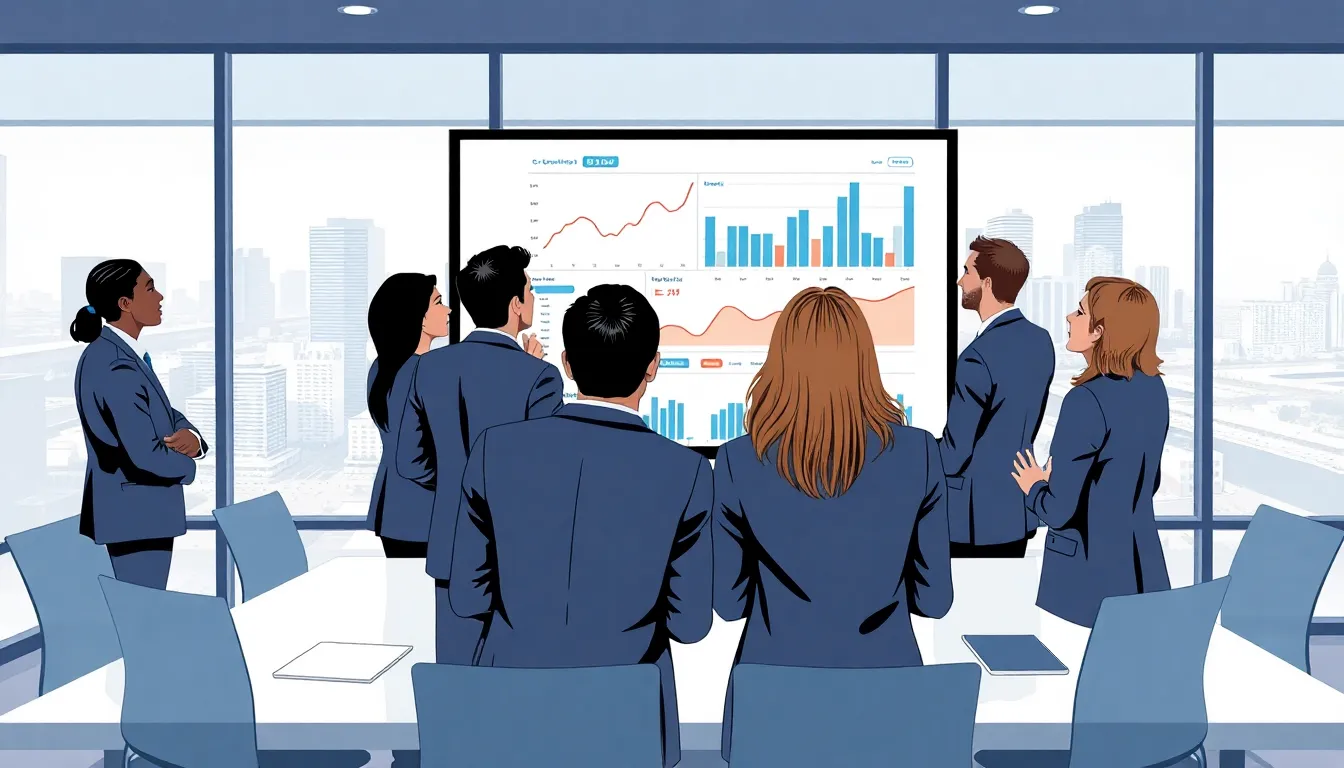Table of Contents
ToggleIn a world where avocado toast can cost as much as a small car, understanding economic trends becomes essential. These trends are like the weather forecast for your financial future—predicting the highs, lows, and unexpected downpours that can impact everything from your wallet to your job security.
What Are Economic Trends
Economic trends represent the general direction in which an economy is moving over time. They emerge from patterns observed in various economic indicators such as gross domestic product (GDP), inflation rates, and employment figures. Businesses and policymakers monitor these trends to make informed decisions that impact growth and stability.
Trends can be categorized as cyclical, seasonal, or secular. Cyclical trends occur alongside economic cycles, reflecting periods of expansion and contraction. Seasonal trends arise due to predictable changes, such as holiday spending surges. Secular trends signify long-term shifts, like the rise of digital currencies.
Several key indicators provide insight into economic trends. GDP growth, a primary measure of an economy’s health, indicates how much value an economy creates. Unemployment rates reveal job availability and consumer confidence. Inflation indicators, featuring price changes over time, impact purchasing power.
Understanding these economic trends aids individuals in making better financial choices. For example, during a period of rising inflation, consumers might prioritize saving over spending. Business owners may adjust pricing strategies based on employment data trends.
Tracking trends can also highlight potential risks. Economic downturns may signal decreasing job security, prompting adaptive strategies. Staying informed on these shifts allows individuals and businesses to navigate the complexities of the financial landscape effectively.
Key Types of Economic Trends

Economic trends are often categorized into various types, each offering distinct insights into market behavior. Two vital classifications include short-term trends and long-term trends.
Short-Term Trends
Short-term trends refer to fluctuations occurring within a few months to a couple of years. These trends often align with cyclical changes in the economy, influenced by events such as consumer demand, interest rates, and seasonal patterns. For instance, retail sales may spike during holiday seasons, showcasing increased consumer spending. Market analysts focus on short-term trends to adapt pricing strategies and inventory management. As these trends depict immediate changes, they often signal opportunities or risks for investors and businesses alike.
Long-Term Trends
Long-term trends encompass changes that persist over several years or even decades. Economic growth, demographic shifts, and technological advancements typically drive these trends. For example, the rise of digital currencies represents a significant long-term trend affecting financial markets and regulatory policies. Understanding these enduring patterns allows businesses to strategize for future developments and allocate resources effectively. As these trends shape economies, they provide a broader perspective on financial stability and growth potential.
Factors Influencing Economic Trends
Economic trends are shaped by various significant factors. These influences can alter the trajectory of economic growth and overall stability.
Political Stability
Political stability plays a crucial role in fostering economic growth. It influences investor confidence, which in turn affects business operations. Countries with steady political environments experience more investment inflows, as risks associated with sudden shifts in governance decrease. High levels of stability often correlate with long-term economic success, allowing for predictable policies that support development. Conversely, political unrest can lead to economic downturns, as uncertainty drives investors away. Thus, observing political changes is vital for understanding potential economic trends.
Technological Advancements
Technological advancements significantly impact economic trends by driving productivity and innovation. They create new industries and reshape existing ones, enhancing efficiency in production and service delivery. Automation exemplifies how technology boosts output while minimizing costs. As firms adopt new technologies, they often experience growth, contributing to overall economic expansion. Moreover, increased connectivity allows businesses to reach broader markets and reduce operational barriers. Staying informed about technological progress reveals potential shifts in economic trends, guiding strategic decisions for businesses and investors alike.
Impacts of Economic Trends
Economic trends significantly impact various aspects of society, influencing both businesses and consumers. Awareness of these changes shapes strategic decisions and personal financial choices.
On Businesses
Businesses react dynamically to economic trends. Fluctuations in consumer demand often dictate pricing strategies and inventory management. Sales performance typically rises during holiday seasons, affecting production schedules and staffing needs. Leaders focus on long-term trends, such as the growing importance of digital currencies, which influences investment decisions and operational models. Economic indicators also highlight potential risks, prompting organizations to adapt resource allocation and marketing tactics. Understanding trends enables businesses to thrive in competitive markets by leveraging opportunities and mitigating challenges.
On Consumers
Consumers experience the effects of economic trends directly. Variations in inflation rates and employment figures affect purchasing power and spending habits. Individuals may adjust budgets based on economic indicators, prioritizing essential goods over luxury items during downturns. Enhanced awareness of market conditions influences consumer confidence, driving decisions on large purchases such as homes and vehicles. Shifts in trends can lead to changes in saving behaviors, impacting financial security for families. Staying attuned to economic developments empowers consumers to make informed choices and navigate financial landscapes effectively.
Analyzing Economic Trends
Understanding economic trends requires analyzing data from various sources and employing specific analytical methods. This approach helps in identifying and interpreting fluctuations within the economy.
Data Sources
Data sources play a crucial role in analyzing economic trends. Government agencies like the Bureau of Labor Statistics publish employment figures and inflation rates. Similarly, private institutions such as the Conference Board provide insights into consumer confidence and economic forecasts. Academic research also contributes valuable data through studies on market behaviors. Financial institutions analyze investments and lending activity to discern broader economic patterns. Utilizing a variety of sources yields a comprehensive view of the economic landscape.
Analytical Methods
Employing different analytical methods enhances the understanding of economic trends. Statistical analysis serves as a primary tool for evaluating numerical data, allowing for trend identification and forecasting. Comparative analysis offers insights by contrasting current data with historical benchmarks, revealing patterns over time. Regression analysis establishes relationships between variables, shedding light on factors influencing economic outcomes. Additionally, qualitative assessments like surveys gauge consumer sentiment and business outlook. These methods collectively empower analysts to make informed predictions about future economic shifts.
Grasping economic trends is vital for navigating today’s financial environment. These trends not only influence personal finances but also shape business strategies and investment decisions. By recognizing the patterns in economic indicators and understanding the factors that drive these trends, individuals and organizations can better prepare for potential changes.
Staying informed about economic shifts empowers consumers and businesses alike to make strategic choices. As the landscape continues to evolve, adapting to these trends will remain essential for achieving financial stability and growth. Whether it’s through short-term fluctuations or long-term developments, the ability to interpret economic trends will play a crucial role in future success.






